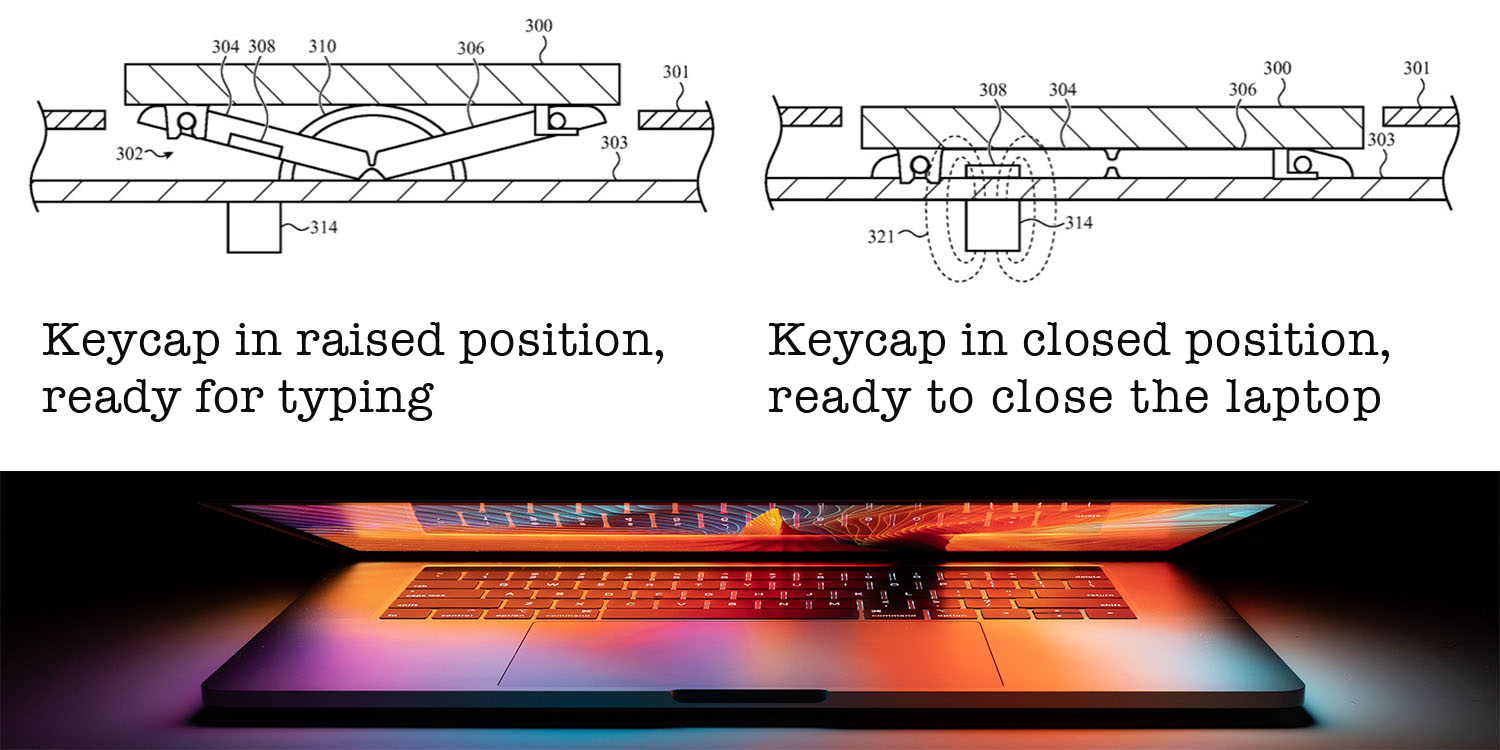
Apple has long been on a mission to make MacBooks ever thinner, and a new patent granted today describes how a retractable keyboard could help.
Earlier patents suggest that Apple’s long-term goal is a completely solid-state keyboard, which uses electrostatic charges to allow users to “feel” keys so that touch-typing remains possible, and haptic motors to simulate key presses for the feel of a physical keyboard …
This patent doesn’t go that far, but does enable Apple to make laptops thinner while still retaining physical key movement.
Apple explains in the background that physical keyboards make laptops thicker than would be the case with touch-based keys.
Keyboards may include keys with keycaps that move when pressed by a user, and the motion of the keycap may trigger a connected device to perform some action or function. As another example, handheld electronic devices such as smartphones may include buttons with actuation members that move when pressed and cause the electronic device to perform some action or function. Due to the movement of keycaps or other actuation members, input devices with movable components may be larger than input devices that lack movable components.
What Apple proposes is to use a magnet system to allow the keys to function normally when in use, but to retract them inside the bottom case when the laptop is closed.
The keyboard may include a substrate, and a key mechanism comprising a keycap support mechanism, a keycap supported by the keycap support mechanism, a ferromagnetic component attached to the keycap support mechanism, and a selectively magnetizable magnet system. The selectively magnetizable magnet system includes a magnetizable material, and a coil configured to selectively magnetize and demagnetize the magnetizable material.
The keycap may be bistable (that is, capable of being held in either of two positions without external force); the position of the keycap may vary as the magnetizable material is magnetized or demagnetized.
At first glance, this would appear to be describing an electromagnet system, which would involve power being used to hold the keys in the retracted position. However, the patent makes it clear that this wouldn’t be the case: Apple would instead use materials that require an initial application of power to magnetize them, and they then remain magnetized when power is cut.
When the magnetizable material is magnetized, the magnetizable material may produce a persistent magnetic field that is maintained without a continuous application of electrical power to the coil.
Apple gives aluminum nickel cobalt iron and chromium cobalt iron as examples of suitable materials for use in the retractable keyboard.
Of course, the usual patent disclaimer applies – Apple patents numerous things that it never brings to market – but just the thought of a new MacBook keyboard design is enough to make me feel a touch nervous…
Via Patently Apple
FTC: We use income earning auto affiliate links. More.



Comments